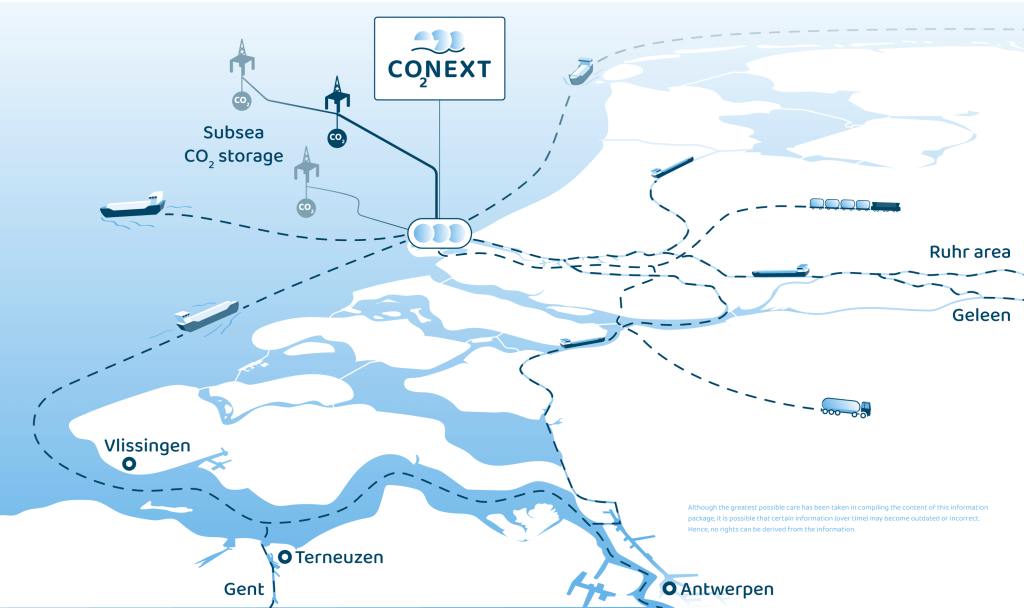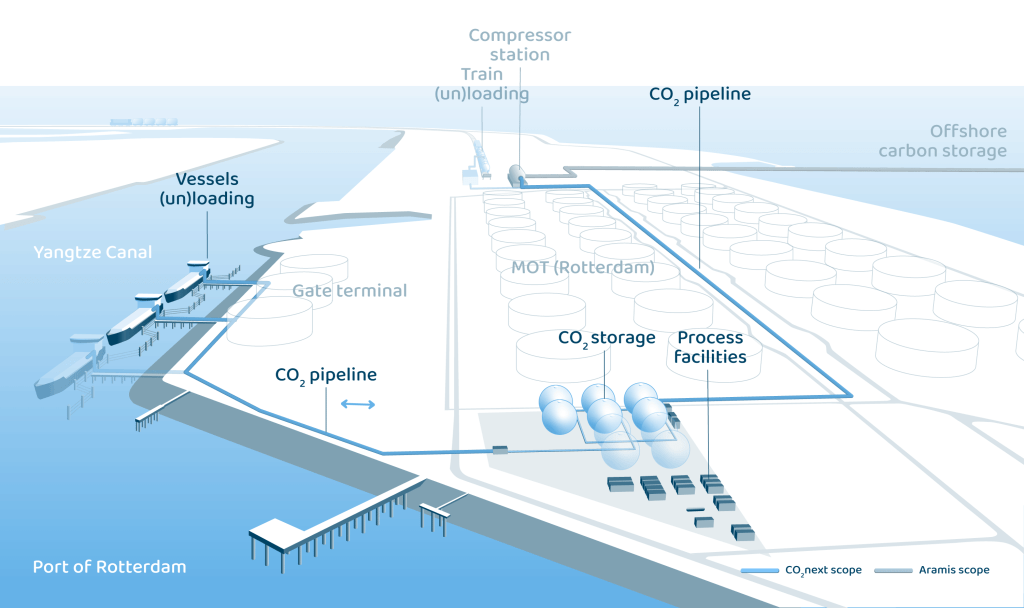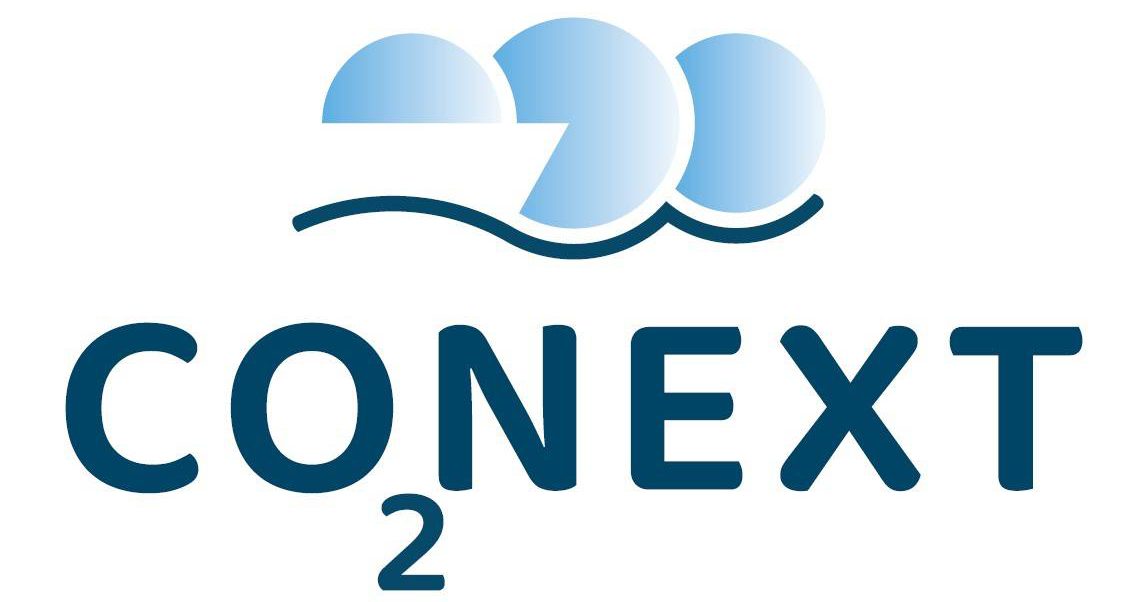What is CO2next
CO2next aims to build a liquid CO2 terminal at the Maasvlakte in the port of Rotterdam, that can be used by customers not connected to a CO2 pipeline to ship liquid CO2. Therefore, the terminal will be a critical piece of CO2 infrastructure which can be leveraged as part of the Carbon Capture and Storage (CCS) chain. The technical feasibility and development of such CCS chain is jointly explored with the Aramis CCS project, to which the terminal will be connected.
What happens at the terminal?
• Unloading liquid CO2
• Temporary storage of CO2
• Adjusting the pressure of the CO2
• Sending the CO2 towards the Aramis
pipeline (and final storage)
What are the plans for the future?
• Reloading liquid CO2 onto other ships
• Unloading and reloading liquid CO2
delivered by rail

Potential customers for the CO2next Terminal have been approached in 2022, which to date has led to several customers who are keen to leverage the open access terminal for their decarbonisation needs.
The terminal has a launch capacity of approximately 5.4 million tonnes per year (Mtpa) and a potential to grow its capacity to approximately 15 Mtpa, depending on market demand and the development of the Aramis project and other CCS chains.

Project Status
Permitting
The first batch of permit requests has been submitted in February 2024, in collaboration with the Aramis project and the stores. Two more permit applications will follow. Stay up to date and informed through the Ministry’s project page: https://www.rvo.nl/onderwerpen/bureau-energieprojecten/lopende-projecten/aramis
Project
In June 2024, the CO2next partners have jointly decided to enter the so-called FEED (Front End Engineering Design) phase. During the FEED phase the design, the realisation schedule and the cost of the proposed CO2next terminal will be further defined, the relevant permits can be received and customers will be contracted in preparation for the Final Investment Decision (FID) currently planned for 2025. Following this final investment decision, subject to permits being granted by relevant authorities, the building phase can start and the terminal is currently foreseen to commence commercial operations in 2028.
Safety
Safety is a top priority. Safety is a carefully considered aspect for all elements of the project, as the risk to people and nature must be as low as reasonably practical. CO2 is a substance that naturally poses little risk.
We are committed to build a safe terminal in collaboration with the responsible authorities.
- The risks of CO2 transport and storage are low.
- CO2 is naturally present in the air; only very high concentrations pose a potential risk.
- CO2 is not flammable.
- CO2 is a gas that dissipates very quickly.
Nature & Environment
The aim is to build a terminal with minimal impact on nature and its surrounding environment. Extensive studies have been conducted to understand the impact of the terminal, in close collaboration with the government that will assess these studies and findings prior to granting permits.

